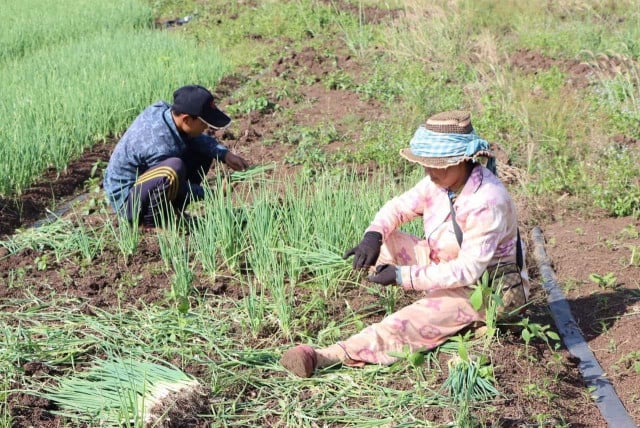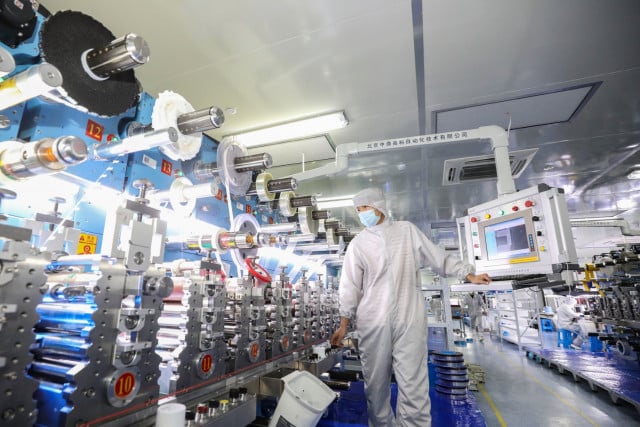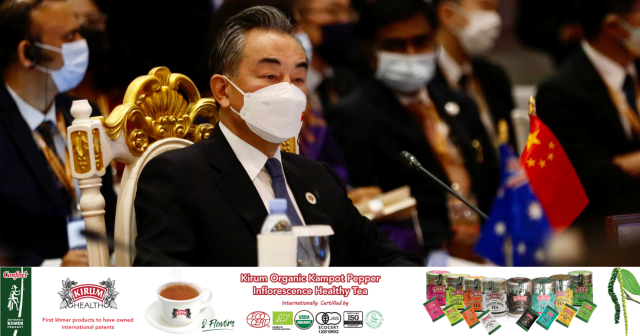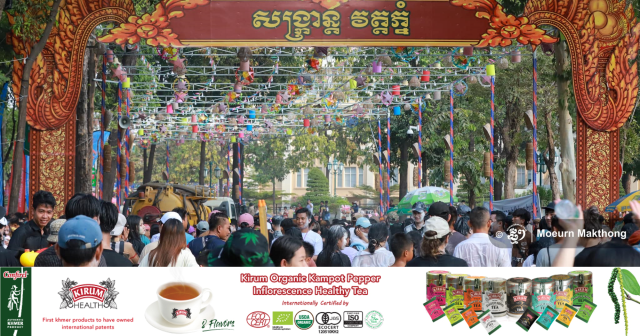Rising Temperatures Put Pressure on Farmers

- By Chhum Chantha
- April 21, 2023 2:50 PM
PHNOM PENH – Climate change is continuously affecting the agriculture sector in Cambodia. Recent record-high temperatures in the ongoing dry season are degrading the plantations, leading to crop loss due to lack of water.
Ten Tum, the president of the Kork Srok Green Agriculture Community in Thbong Khmom province, said the rising temperature has caused the vegetable yields to fall down by 40 percent while some plantations could not grow well because of damaged petals, shriveled leaves or dried-out flowers falling to the ground.
While the community usually produces between 5 and 6 metric tons of vegetables every day, farmers could only harvest around 2 tons daily during the last few months, due to hot temperatures.
According to Tum, the vegetables that suffer the most from the heat are cucumbers, green beans, and lettuce, as they are temperate-climate vegetables that require a lot of water.
The community leader is worried because the rise of temperatures over the years affects the vegetable growing process. Meanwhile, farmers are complaining as they lack water for their plants.
Tum said the farmers in his community are not knowledgeable enough to deal with climate change. They must learn how to adapt their farming techniques and chose heat-resistant vegetable varieties.
“Plants that are growing well now will see their fruits fall eventually. During the dry season, the harvest decreases by about 40 percent compared to the rainy season,” Ten Tum said.
Another problem is the drop in vegetable prices in Cambodian markets. For instance, the selling price of cucumber fell from 2,000 riel (about $0.5) to 600 riel (barely $0.15) between February and the end of March. It could take until June and the first rains before prices recover.
While he expected prices to go up, as scarcity creates value, Tem Tum explains the prices decrease as a potential drop in consumption and the competition from imported vegetables, which manage to be cheap and abundant.
In addition, farmers must deal with the surging prices of agricultural inputs, like fertilizers, or gasoline, which lowers their margins.
“First, farmers lack water. Second, the vegetables affected by the rising temperature do not provide many yields. Third, the prices of fertilizers, fuel, and gas are rising. Therefore, farmers are barely accepting this. They can’t make any profit at all,” said Tum.
Farmers must adapt to new techniques
Soeum Noun, the president of Samaki Omlaing Agricultural Community in Kampong Speu province, said farmers in the province are also suffering from the rising temperature which burns their vegetables and sheds the leaves. Salads are particularly vulnerable, she noted.
The yields declined by almost 80 percent since the beginning of the dry season, she said. The community usually produces around 800 kilograms to 1 ton of vegetables per day, but the production fell down to only 200 to 300 kilograms.
Plantations are also harmed by swarms of worms that have destroyed many crops since they appeared in March.
“To sum up, farmers are facing a really big loss this season. Some of them just got too discouraged by the accumulation of problems and put their production on hold,” she said.
Sok Sothea, an expert at GRET Cambodia, an NGO dedicated to social justice through nutrition, said agriculture is the sector most vulnerable to climate change. “During the dry season, around 70 percent of the crops are damaged, especially those planted in the net houses where there is little wind for the vegetables. The inadequate wind hinders the vegetable growing process,” he said.
To reduce the temperature inside the net houses, farmers are required to make a few windows on the roof to allow more air to go inside. Farmers need to install fans to provide extra cooling to the crops and can drop-by-drop systems to provide constant water to the crops and allow them to bear the heat.
Vegetables that grow in the fields are also severely affected by the temperature, he pointed out. To prevent them from being damaged by the sun, farmers should use covers made from coconut husks, straws, and dried cauliflower to cover the crops.
“Therefore, the covers will cool the soil and reduce the heat when watering. At the same time, farmers should be watering their crops often. Those in dehydrated areas should choose crops that are suitable for the weather conditions,” he said.
Sothea, however, thinks that when the temperature is high, it is an opportunity for farmers to sell vegetables. As the dry season is usually a period when crops are lower, it can be a market opportunity for farmers to increase their prices.
He urged them to grow more vegetables to seize market opportunities this summer while stressing that they should also take good care of their vegetables to get abundant yields.
Worried about farmers' vegetables, Sothea urged them to plant trees along their fields to reduce the effect of increasing heat that puts pressure on people and their plantations.
Originally written in Khmer for ThmeyThmey, this story was translated by Meng Seavmey for Cambodianess.















